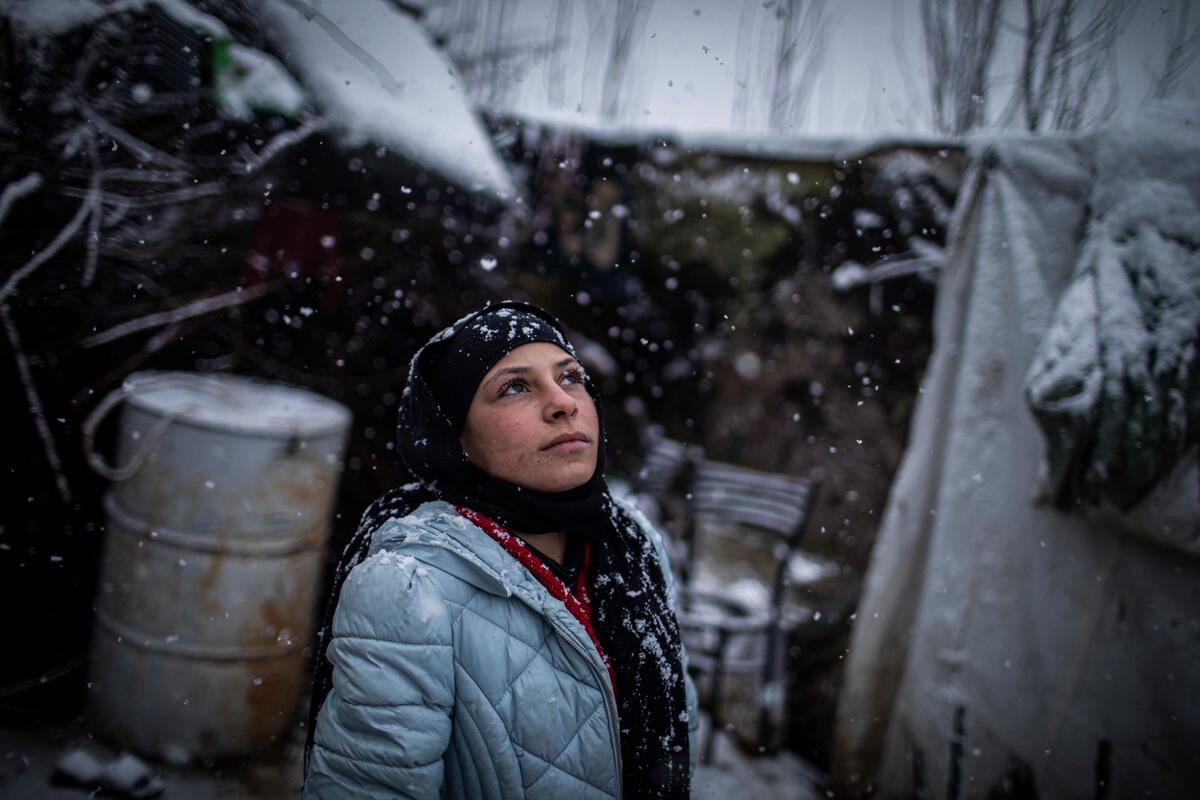A bad business idea could help fill a critical need for Syria's refugees
A bad business idea could help fill a critical need for Syria's refugees

QOUBAIYAT, Lebanon, December 19 (UNHCR) - One of the biggest challenges facing Syrian refugees is also one of the most fundamental. Finding safe, secure and dignified shelter for the 2.3 million-plus to have fled the country is an enormous task. In Lebanon, where there are no major camps to accommodate the influx, and where each arriving family requires a new solution, the problem is urgent.
Rents are increasing, the capacity of host families to accommodate refugees is being exhausted, and available space is disappearing. In the northern Lebanon town of Qoubaiyat, UNHCR and its partners have hit upon a novel solution. Earlier this month a group of families moved into their brand new home, refurbished with funds from UNHCR and managed by the Danish Refugee Council - It's a chicken farm.
"I don't want to leave," said Fatimah, a refugee from the Syrian city of Qusayr, who arrived here last month after being forced to leave her previous home near the Syrian border because of shelling.
The shelter, a three-storey concrete and cement-block building with sweeping views of the surrounding countryside, will ultimately accommodate 60 families. It is one of a dozen such farms in the region that UNHCR hopes to make operational by the middle of next year, with five opening by as early as the end of this month.
The shelters are available thanks to a business idea gone bad. Several years ago, local entrepreneurs took advantage of favourable loans to build multi-storey concrete chicken farms in the rugged countryside along the Syrian border. The cavernous structures, which afforded the birds lots of air and light and a roof over their heads, were intended to serve as suppliers for major poultry distributors.
But a variety of factors, including the global financial crisis, concerns over hygiene and avian flu, and consolidation in the poultry sector, led to many of the new enterprises failing. The result was abandoned buildings scattered across the hillsides of northern Lebanon with no apparent use. Then the Syria crisis erupted.
"We thought that this was a good option," said Vincent Dupin, the senior site planner for UNHCR in Lebanon. "In this country we have to be creative to find shelters," he said. "Otherwise we are stuck."
In other conflicts, such as the Kosovo crisis of 1999, he said, agricultural buildings such as barns were used to house refugees, but this is the first time to his knowledge that chicken farms have been used as shelter by UNHCR.
He conceded that some officials were sceptical that chicken farms could be repurposed in this way. Industrial cleaners had to be brought in to scrub the floors, cement blocks fitted to shut out the bitter winter mountain weather, and power and water delivered from the municipal supplies. The ground around the building has been levelled and gravel laid to keep the dust down. On the up side, rent for the abandoned buildings is negligible; refurbishment cost about US$100,000.
When Fatimah and her family moved in last month, children ran through the corridors and peeked from wire mesh windows. Fatimah said she was particularly relieved to have a room of her own, to share with her husband, for the first time since fleeing Qusayr five months ago. She held up a green key chain with her very own key, and grinned.
The Danish Refugee Council, which is administering the shelters together with a local partner, the Akkar Network for Development, says that it will continue to monitor the refugees' needs at each shelter since the housing is unconventional. The agency is considering transport to schools for the children and helping with access to local food markets. If all goes according to plan, by the middle of 2014, the farms could house as many refugees as a full-fledged transit site. In a country with little useable shelter, this is one bad idea that could turn out to be a very good one.








